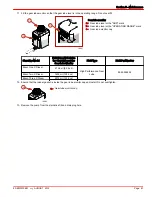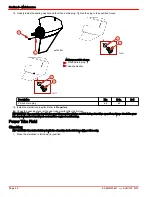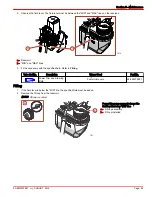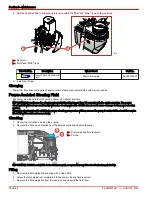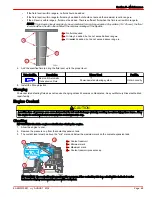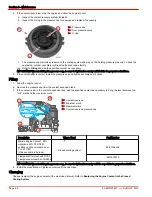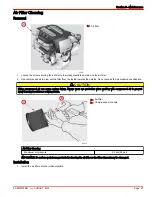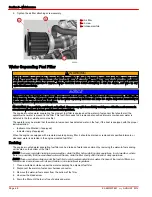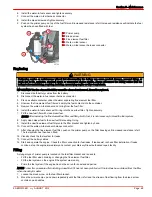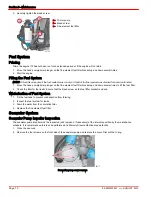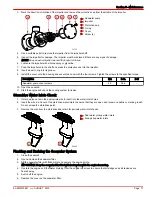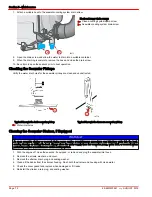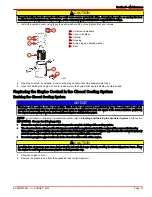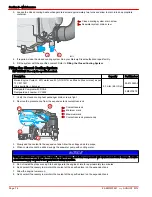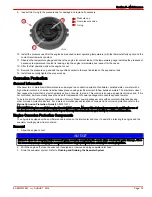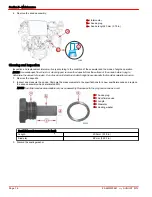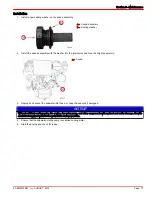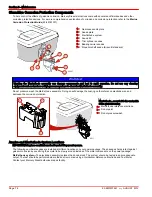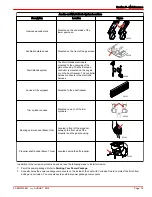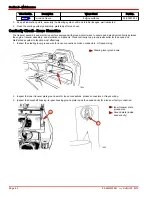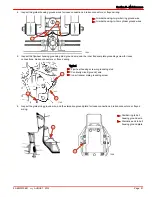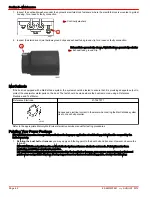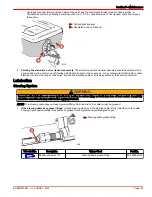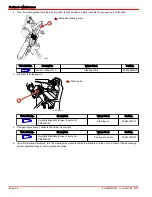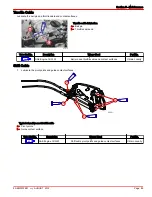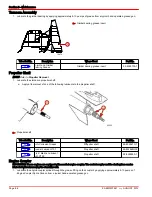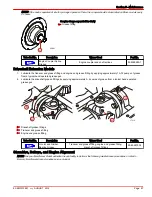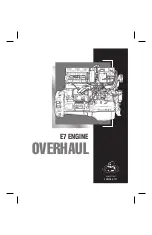
Section 5 - Maintenance
90-8M0070851
eng
AUGUST 2012
Page 75
9. Inspect the O‑ring in the pressure cap for damage and replace if necessary.
a -
Pressure cap
b -
Over pressure valve
c -
O‑ring
10. Install the pressure cap after the engine has reached normal operating temperature (with the thermostat fully open) and the
coolant level remains constant.
11. Observe the temperature gauge and check the engine for coolant leaks. If the temperature gauge indicates the presence of
excessive temperature or coolant is leaking, stop the engine immediately and inspect for the cause.
12. After the first operation, allow the engine to cool.
13. Remove the pressure cap and add the specified coolant to the level indicated on the expansion tank.
14. Install and securely tighten the pressure cap.
Corrosion Protection
General Information
Whenever two or more dissimilar metals are submerged in a conductive solution of saltwater, polluted water, or water with a
high mineral content, a chemical reaction takes place causing electrical current to flow between metals. The electrical current
flow causes the metal that is most chemically active, or anodic, to erode. This erosion is known as galvanic corrosion and, if it is
not controlled, it will eventually cause the need for replacement of power package components exposed to water.
To help control the effects of galvanic corrosion, Mercury Diesel power packages come with several sacrificial anodes and
other corrosion protection devices. For a more comprehensive explanation of corrosion and corrosion protection refer to the
Marine Corrosion Protection Guide
(90‑88181301).
IMPORTANT: Replace sacrificial anodes if eroded 50% or more. Mercury Diesel strongly recommends avoiding the use of
anodes from another manufacturer. Refer to your Mercury Diesel authorized repair facility for additional information.
Engine Corrosion Protection Components
The engine is equipped with a sacrificial anode located on the intercooler end cover to assist in protecting the engine and the
seawater cooling system from corrosion.
Removal
1. Allow the engine to cool.
NOTICE
Failure to close the seawater inlet or seacock when removing or replacing the anode plugs can lead to water damage. Close
the seacock or remove and plug the seawater inlet hose to prevent water from entering the anode plug holes.
2. With the engine off, close the seacock, if equipped, or remove and plug seawater inlet hose.
3. Drain the seawater system. Refer to
Flushing and Draining the Seawater System
.
a
b
c
50656
Содержание Sterndrive TDI 3.0L
Страница 4: ......
Страница 36: ...Section 2 Getting to Know Your Power Package Notes Page 28 90 8M0070851 eng AUGUST 2012 ...
Страница 50: ...Section 3 On The Water Notes Page 42 90 8M0070851 eng AUGUST 2012 ...
Страница 56: ...Section 4 Specifications Notes Page 48 90 8M0070851 eng AUGUST 2012 ...

